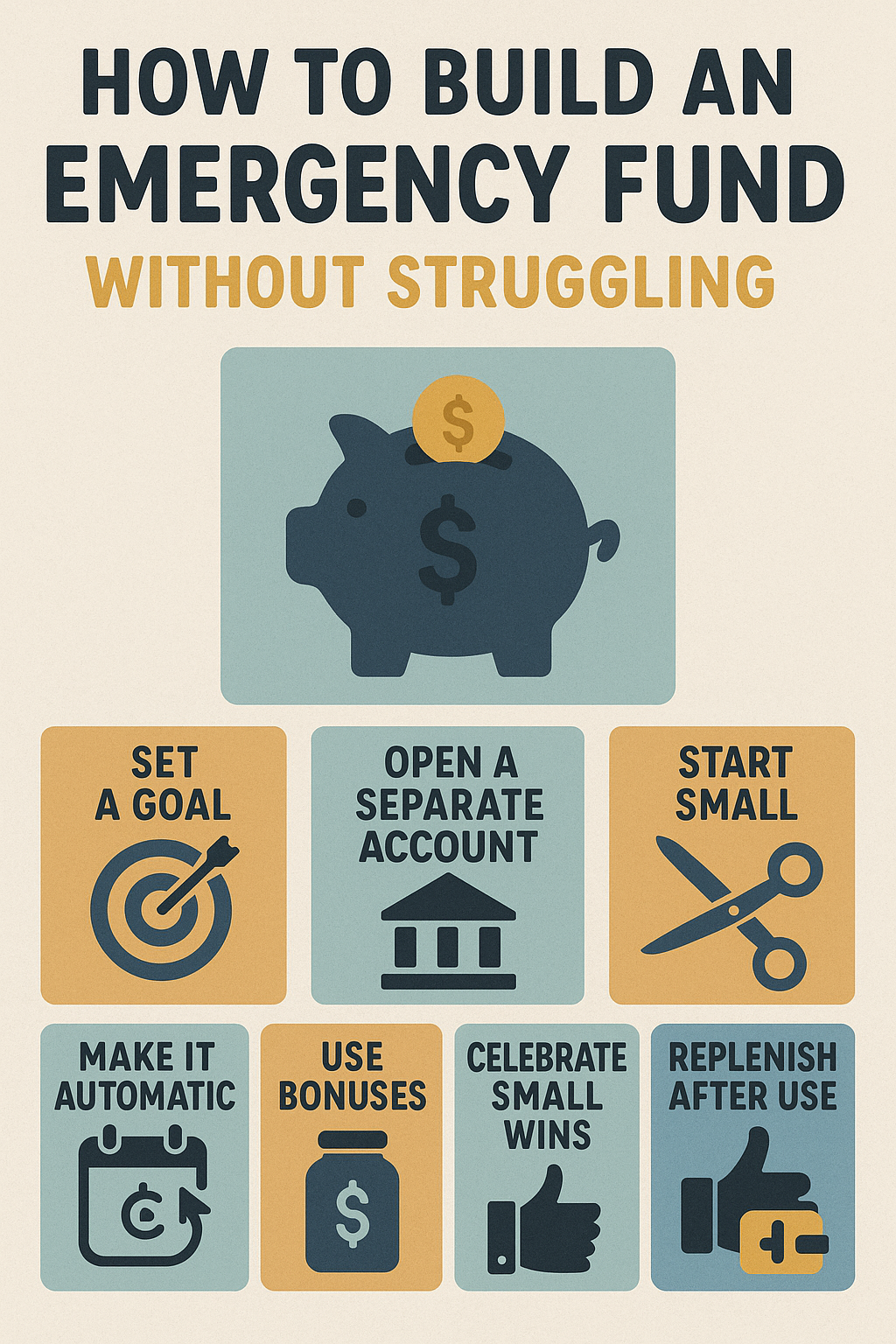An emergency fund is your financial safety net—it helps you cover unexpected expenses like medical bills, car repairs, or a sudden job loss. But what if your income is tight? The good news is: you don’t need to be rich to build an emergency fund. With the right approach, anyone can do it—without feeling deprived. Here’s how to start and grow your emergency fund, even if you feel like saving is impossible.
What Is an Emergency Fund?
An emergency fund is money set aside specifically for urgent, unplanned expenses. It keeps you from relying on credit cards, loans, or borrowing from friends or family during a crisis.
When to Use It
- Job loss
- Medical emergencies
- Car or home repairs
- Unexpected travel
- Emergency pet care
It’s not for shopping, vacations, or impulse spending. Use it only when absolutely necessary.
How Much Should You Save?
Starter Goal
Begin with a small, achievable goal:
$500 to $1,000 is a great first milestone for most people. This amount can cover many common emergencies.
Long-Term Goal
Eventually, aim to save 3 to 6 months’ worth of living expenses. The right amount depends on your situation:
- If you’re single with no dependents, 3 months may be enough.
- If you have kids, own a home, or have an irregular income, aim for 6 months.
Step 1: Know Your Monthly Essentials
To calculate how much to save, first identify your basic monthly costs:
- Rent or mortgage
- Utilities
- Food
- Transportation
- Minimum debt payments
- Insurance
Add these up to determine your monthly survival budget. Multiply by 3 or 6 to set your emergency fund target.
Step 2: Open a Separate Savings Account
Keep your emergency fund separate from your everyday checking account.
Why It Matters
- Reduces temptation to spend
- Keeps your budgeting clear
- Helps you track your progress
Look for an account with:
- No fees
- Easy access when needed
- Optional interest (like a high-yield savings account)
Step 3: Start Small and Be Consistent
You don’t need to save hundreds per month. Start with what’s doable—even $5 to $10 a week adds up.
Strategies to Start Saving:
- Round up purchases and transfer the difference to savings (some banking apps do this automatically)
- Save cash-back rewards or change from cash purchases
- Transfer small windfalls like birthday money or refunds directly into your fund
Step 4: Cut One Small Expense
Identify one thing you can temporarily cut to boost your savings.
Examples:
- Make coffee at home instead of buying it
- Cancel a subscription for 2–3 months
- Cook dinner instead of eating out
Take that saved money and transfer it immediately into your emergency fund.
Step 5: Make It Automatic
Set up automatic transfers from your checking to your savings account. Even $20 every payday will build momentum.
Benefits of Automation
- Removes willpower from the equation
- Treats savings like a non-negotiable bill
- Helps you build the habit faster
Step 6: Use Bonuses and Tax Refunds Wisely
When you receive unexpected money, resist the urge to spend it all. Allocate at least a portion to your emergency fund.
Examples:
- 50% to savings
- 30% to debt
- 20% to personal use (reward yourself)
This strategy lets you enjoy the money while still making financial progress.
Step 7: Celebrate Small Wins
Every milestone counts—celebrate when you reach $100, $250, $500. You’re building more than savings—you’re building confidence.
Use a savings tracker, jar, or app that visualizes your progress. It helps you stay motivated, especially when things get tough.
Step 8: Replenish After Use
If you ever need to dip into your emergency fund, make a plan to rebuild it as soon as possible.
How to Rebuild
- Resume your automatic transfers
- Cut back slightly on non-essentials
- Use small side gigs to recover the balance faster
Don’t feel guilty for using your fund—that’s what it’s there for. Just make sure to refill it.
Common Mistakes to Avoid
- Mixing savings with spending money: Always keep them separate.
- Using it for non-emergencies: Ask yourself, “Is this urgent, unexpected, and necessary?”
- Trying to save too much too fast: It can lead to frustration. Go at your pace.
Final Words: Protect Your Future With Small Steps Today
You don’t need a six-figure salary to have financial security. Building an emergency fund is about discipline, not income. With small, consistent actions and smart strategies, you can create a cushion that protects you—and gives you peace of mind.
Start with what you can. Keep going. And remember: your future self will thank you for every dollar you set aside today.
